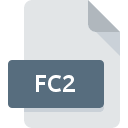.CLARA File Extension

Clara Archive
| Developer | Exocortex Technologies |
| Popularity | |
| Category | 3D Image Files |
| Format | .CLARA |
| Cross Platform | Update Soon |
What is an CLARA file?
The .CLARA file extension is associated with Clara Archive files, a specialized format designed for the storage and distribution of large datasets, often within scientific research, engineering, and data-intensive industries.
This file format is used to package vast amounts of data into a single, manageable archive, facilitating easy transfer, backup, and sharing among professionals and institutions.
More Information.
The .CLARA file extension was first introduced in the early 2010s, at a time when the demand for efficient data storage solutions was escalating.
The initial purpose of the Clara Archive format was to streamline the storage and sharing of large datasets in a way that was both efficient and reliable.
As scientific research became more data-driven, the need for a file format that could handle large volumes of data without significant loss of information or integrity became apparent.
Researchers and data scientists faced challenges in managing large datasets, especially when it came to sharing these datasets with collaborators across different geographical locations.
The Clara Archive format was created to address these challenges, providing a means to compress and package data into a single file that could be easily transferred and accessed by multiple users.
Origin Of This File.
The .CLARA file extension was developed as part of the Clara project, a suite of tools and software aimed at enhancing the management and manipulation of large datasets.
The need for such a file format emerged from the growing complexity of data handling requirements in scientific research, where datasets often span multiple gigabytes or even terabytes.
The Clara Archive format was designed to address these needs by providing a robust and efficient means of compressing, storing, and transporting data.
File Structure Technical Specification.
The .CLARA file is a container format that holds one or more data files within it, often compressed to reduce file size.
The file structure is designed to support both text and binary data, making it versatile for different types of datasets.
Key Technical Specifications:
- Compression: Clara Archive files typically use a lossless compression algorithm to ensure that the integrity of the data is maintained when it is compressed. This makes it ideal for scientific and engineering applications where data accuracy is critical.
- Metadata: The format supports the inclusion of metadata, which can store information about the contents of the archive, such as the origin of the data, the date of creation, and details about the compression algorithm used. This metadata is crucial for maintaining the context and usability of the data.
- File Indexing: Clara Archive files include an indexing system that allows for quick access to specific parts of the data without the need to decompress the entire file. This feature is particularly useful for large datasets where users may only need to access specific portions of the data.
- Checksum and Error Detection: To ensure data integrity, .CLARA files incorporate checksums and error detection mechanisms. These features help to identify and correct errors that may occur during file transfer or storage.
How to Convert the File?
Converting .CLARA files to other formats is possible, but it typically requires specialized software that supports the Clara Archive format.
The conversion process involves extracting the contents of the .CLARA file and then re-archiving or converting the extracted files into another format, such as .ZIP, .TAR, or even custom formats used in specific research fields.
Steps for Conversion:
- Obtain Clara Archive Software: Download and install software that can open and extract .CLARA files. This could be the original Clara software or a third-party tool that supports the format.
- Extract Contents: Use the software to extract the contents of the .CLARA file to a directory on your computer.
- Repackage/Convert Files: Once the data is extracted, you can repackage it using a different file format, such as
.ZIPor.TAR, or convert the data files themselves into another format depending on the intended use. - Save and Verify: Save the new archive or file in the desired format and verify that all data has been successfully converted without loss or corruption.
Advantages And Disadvantages.
Advantages:
- Efficient Storage: The Clara Archive format is optimized for storing large datasets, making it an excellent choice for research institutions and organizations that need to manage vast amounts of data.
- Lossless Compression: The use of lossless compression ensures that no data is lost during the compression process, maintaining the integrity of the original dataset.
- Metadata Support: The inclusion of metadata helps maintain the context of the data, which is essential for research and analysis.
- Cross-Platform Compatibility: .CLARA files can be used across different operating systems, making them versatile and accessible to a broad range of users.
- Error Detection: Built-in error detection mechanisms ensure the reliability of the data, which is critical in scientific and engineering applications.
Disadvantages:
- Specialized Software Requirement: Opening and managing .CLARA files often requires specialized software that supports the Clara Archive format, which may not be readily available to all users.
- Complexity: The advanced features and capabilities of the Clara Archive format may introduce complexity, making it less user-friendly for individuals who are not familiar with data management or compression techniques.
- File Size: While the format is efficient for large datasets, the file size can still be substantial, especially when dealing with extremely large datasets. This can pose challenges in terms of storage and transfer speed.
- Limited Adoption: Compared to more common file formats like
.ZIPor.TAR, the .CLARA file format is less widely adopted, which could limit its usability in some contexts.
How to Open CLARA?
Open In Windows
To open a .CLARA file on a Windows system, you will need to install software that supports the Clara Archive format. This software may be available as part of the Clara project or as a third-party tool.
- Install the Software: Download and install the software that can open .CLARA files.
- Open the File: Right-click on the .CLARA file, select the software from the “Open with” context menu, or open the software first and then load the .CLARA file.
Open In Linux
Linux users often have the advantage of using command-line tools, which may include support for the .CLARA format.
- Install via Package Manager: Use your Linux distribution’s package manager to install software that can handle .CLARA files.
- Command-Line Access: Open a terminal and use the appropriate command to extract or open the .CLARA file. The command will depend on the software installed.
Open In MAC
On macOS, the process is similar to Windows. Compatibility with .CLARA files may be more limited, so it is essential to ensure that the software you choose supports macOS.
- Install Compatible Software: Download and install Clara Archive software that is compatible with macOS.
- Open the File: Double-click the .CLARA file to open it with the installed software, or drag the file into the software interface.












